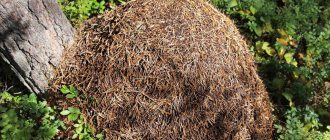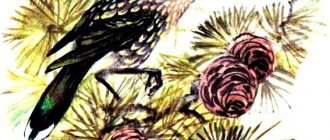Seas and oceans are the cradle of life on Earth. According to some theories, all life on the planet originated in water. The sea resembles a huge metropolis, where everything lives according to its own laws, everyone takes their place and performs a very important function. If this order, which has developed into a harmonious mosaic, is disrupted, then this city will cease to exist. Therefore, it is important to know about the riches of the animal world. You can find out who these marine inhabitants are, photos with the names of the most common species and interesting facts about their life.
All living creatures inhabiting the sea are divided into several categories:
- animals (mammals);
- fish;
- algae and plankton;
- deep-sea fauna;
- snakes and turtles.
There are animals that are difficult to classify into a specific group. For example, sponges or sponges.
Underwater urchins
In the ruff, as in the hedgehog, the most noticeable thing is the spines.
Head, tail, spines in the middle - that's the whole ruff.
And also the eyes: lilac-blue, large, like a frog’s.
Ruff is as tall as a little finger. And if it’s the size of an index finger, then he’s already a ruff old man.
These old men scared me. I swim and see: the bottom is moving! It stirred and stared at me with points of dark eyes.
These are ruffs - old man to old man! They themselves are invisible: tails, heads, spines - everything is as spotted as the bottom. Only eyes are visible. I hung over the ruffs, my fins dangling.
The ruffs became wary. The timid ones suddenly began to fall to the bottom, bend over and deliberately raise clouds of turbidity.
And the angry and brave ruffled the thorns on their humps - don’t come near them!
Like a hawk above the sparrows, I began to circle over the flock of ruff.
The ruffs waited.
I began to wheeze into the breathing tube.
The ruffs were not afraid.
I widened my eyes - at least they didn’t care!
Then I... almost said: “I spat on the ruffs”... No, I didn’t spit, you can’t spit under water, but I waved my flipper at the ruffs and swam away.
No such luck!
A sharp swing of the fin caused mud to rise and swirl from the bottom. All the ruffs rushed to her: after all, delicious worms and larvae rose from the bottom along with the mud!
The faster I worked with my fins, in a hurry to swim away, the more silt I lifted from the bottom.
Clouds of silt swirled behind me like dark storm clouds. Behind the clouds were flocks of ruffs.
The ruffs only lagged behind when I swam to the depths. But at the depths I felt uneasy. I was not yet accustomed to the depth - these were still my first steps under water.
The bottom sank deeper and deeper. And it seemed to me that I was flying above the ground and soaring higher and higher. I just wanted to grab onto something so as not to fall from such a height!
I turned back.
It's overgrown again. There are ruffs in the thickets. It seems more fun: all living souls!
Little fingered ruffs swim in the middle of the water, and old men swim at the bottom. Now I deliberately raised the mud with my flippers. “Old men” and “little fingers,” like sparrows on millet, rushed at her.
I no longer scare the ruffs: I don’t wheeze into the phone, I don’t stare at them.
Just looking.
And therefore, even the most timid no longer fall on their sides to pick up the mud from the bottom and hide in it. And the angriest ones don’t have thorns on their humps.
Flexible guys. The spines in the ruffs, although the most noticeable thing, are not the most important thing!
Fish dances
Before sunrise, a purple cloud with a fiery rim hung over the horizon. The sun rose crimson, and everything - the earth and the sky - turned red. I am sitting under a willow bush with narrow red leaves. Ducks are whistling their wings overhead, and their wings are pink.
An extraordinary sunrise!
Red waves are crushed in the red river. Scarlet clouds of steam move above the wave.
Black seagulls screaming and rushing overhead, like a black crow above the glow of a fire. As if burned, they twist their wings and fall into the burning river, splashing out sheaves of sparks.
The seagulls are getting closer, their cries are getting louder.
And suddenly black fish began to jump out of the red waves. Narrow, like willow leaves. They fly out standing up and, standing up, tail down, fall into the red water. A whole joint flew out and scattered like a fan. Here it is again: one by one, one by one.
Fish dancing!
I look with all my eyes.
Could it be that the fish’s blood also flared up on this amazing red morning?
And in the middle of the river, in the commotion of the waves, two black specks are moving: a smaller speck and a larger speck. A flat head and a hump-like back stick out from the water. Otter! She dived as if she had melted, and fish immediately jumped out of the water and danced: up and down, up and down!
The seagulls saw it and fell, breaking their wings. They began to catch fish right on the fly.
Everything immediately became normal.
The sun rose, and the black seagulls turned white, the black fish turned silver, the red water turned gray. The purple cloud on the horizon moved and melted.
The predators—gulls and an otter—followed the dancing fish and disappeared around a bend in the river.
And I lay by the snag and wrote down what I saw. He started writing on a red piece of paper and ended up writing on a gold one.
Fifth name
Roaches are just like swallows: slender, fast, restless. But they don’t look like swallows in color.
In the water, roaches appear gray, and fishermen sometimes call them seryanki for this. Or rudds - for their red fins.
Roaches are always on the move. Either they dart like gray shadows between the algae, or they suddenly shoot up and flash like sunbeams. Because of this shine, the roach is also called the silver roach.
The roach also has one more name - the fourth. Somehow I made my way through the thickets and swam out into an underwater clearing. The clearing is empty. Some bubbles, like white moths, flew up.
And suddenly red sparks swirled around me!
I even shuddered - my eyes!
Red, shiny, like lights.
You can’t swim past such eyes, you’ll stop: not eyes, but real brake lights!
Because of its red eyes, many fishermen call the roach red-eyed.
How many names does the roach have: seryanka, rudd, silverfish, red-eye! And everyone is good.
But if it were up to me, I would give the roaches a fifth name - water swallow. They are very playful and dexterous. And the tail is like a swallow’s, with a fork.
The most popular types of sea fish
The second largest group of marine inhabitants includes the following species:
- Cod (blue whiting, cod, navaga, hake, pollock, pollock and others).
- Mackerel (mackerel, tuna, mackerel and other fish).
- Flounder (flounder, halibut, dexist, embassicht, etc.).
- Herring (Atlantic menhaden, Atlantic herring, Baltic herring, Pacific herring, European sardine, European sprat).
- Garfish (garfish, medaka, saury, etc.).
- Sea sharks.
The first species lives in the seas of the Atlantic Ocean, comfortable conditions for them are 0 ˚ C. Its main external difference is the mustache on its chin. They live mainly on the bottom, feeding on plankton, but there are also predatory species. Cod is the most numerous representative of this subspecies. It reproduces in large numbers - about 9 million eggs per spawning. It is of great commercial importance, since meat and liver have a high fat content. Pollock is a long-lived member of the cod family (lives 16 - 20 years). It lives in cold waters and is a semi-deep-sea fish. Pollock is caught everywhere.
Mackerels do not lead a bottom-dwelling lifestyle. Their meat is valued for its high nutritional value, fat content and a large amount of vitamins.
In flounders, the eyes are located on one side of the head: right or left. They have symmetrical fins and a flattened body.
Herring fish are pioneers among commercial fish. Distinctive features are no or very small teeth, and almost all lack scales.
Sargan-like fish are elongated in shape with long, sometimes asymmetrical jaws.
The shark is one of the largest marine predators. The whale shark is the only one that feeds on plankton. The unique abilities of sharks are smell and hearing. They can smell a smell from several hundred kilometers away, and their inner ear is capable of detecting ultrasound. The shark's powerful weapon is its sharp teeth, with which it tears the victim's body into pieces. One of the main misconceptions is the idea that all sharks are dangerous to humans. Only 4 species pose a danger to people - bull shark, white shark, tiger shark, and whitetip shark.
Moray eels are marine predators from the eel family, whose bodies are covered with poisonous mucus. Outwardly they are very similar to snakes. They practically cannot see, they navigate in space by smell.
Algae and plankton
This is the most numerous form of life. There are two types of plankton:
- Phytoplankton. It feeds by photosynthesis. Basically it's algae.
- Zooplankton (tiny animals and fish larvae). Eats phytoplankton.
Plankton includes algae, bacteria, protozoa, crustacean larvae, and jellyfish.
Jellyfish are one of the oldest creatures on Earth. Their exact species composition is unknown. One of the largest representatives is the Lion's Mane jellyfish (tentacle length 30 m). The “Australian wasp” is especially dangerous. Transparent jellyfish are small in size - about 2.5 cm. When a jellyfish dies, its tentacles can sting for several more days.











